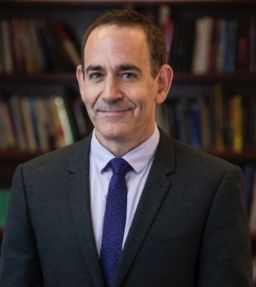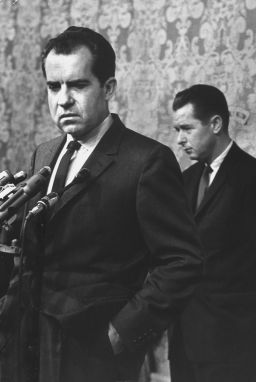Story highlights
CNN Opinion asked historians: What are the weirdest presidential transitions in history?
One transition took place after an election that killed someone, another spawned the Confederacy
Is the transition of power from Barack Obama to Donald Trump the very strangest in the history of the American presidency? Surely it’s a contender: On January 20, an irascibly bombastic real estate mogul and reality star who once accused the President of being a fraud will step up to the plate as commander in chief himself, taking the mantle from the man – community organizer and law professor, preternaturally calm in public – he once claimed might never have really been President at all.
On the other hand, this transfer of power is hardly the first controversial one; the American presidency has a long history of contentious handoffs. CNN Opinion asked historians to give us some context with descriptions of transitions past.
So is the Obama/Trump transition the weirdest ever? After reading about these other six, you decide.
From John Quincy Adams to Andrew Jackson: After the campaign that killed a First Lady-elect

December 2, 1828-March 4, 1829
By H.W. Brands
Editor’s note: H. W. Brands’ most recent book is “The General vs. the President: MacArthur and Truman at the Brink of Nuclear War.” The views expressed here are solely those of the author.
The transition that took place in early 1829 was like no other in American history. For nearly three decades, presidential successions had been anointings, with each president handing power to his favorite, and the president’s party and the electoral college endorsing the selection. Andrew Jackson’s inauguration marked a distinctly hostile takeover of the government. Jackson had been denied victory in 1824 as a result of what the Jacksonians called a “corrupt bargain” between John Quincy Adams and Henry Clay, an inside deal that gave Adams the presidency and made Clay the heir apparent. The Jacksonians’ resentment mounted during the next four years, and it fueled a mean, dirty campaign for the 1828 election. The Jacksonians assailed Adams as a fraud and an aristocrat; the Adams side attacked Jackson as a closet Caesar and his wife, Rachel, as a slut and a bigamist. Rachel, who hated politics, broke down and died under the strain, understandably magnifying Jackson’s anger at his opponents.
Jackson won handily, and his supporters surged to Washington to prevent eleventh-hour shenanigans by the Adams men. To the residents of the capital, these calloused farmers, many from beyond the mountains that separated the East from the West in those days, seemed a horde of barbarians. They acted the part. At Jackson’s inauguration they swarmed the White House in their muddy boots, soiling the carpets, ruining the furniture and breaking the china. When the doors couldn’t handle the pressure of their desire to congratulate their hero, they came in the windows. Jackson was forced to flee the celebration lest he be crushed.
And this was but the start. Jackson announced a thorough house-cleaning (a figurative one, to accompany the actual cleaning and repair required by the damage from the inaugural reception). No civil service protected officeholders in the executive branch, but many postmasters and customs collectors had held their jobs for decades and come to think of them as their property, bequeathable to their sons. Jackson swept large numbers of them out, arguing that no one owned a federal job and that democracy required regular rotation in office.
The job-losers howled; staid Washington predicted the end of the republic. But Jackson’s supporters cheered, and four years later they re-elected him resoundingly. Jacksonian democracy changed the nature of American politics, with effects felt ever since.
From Herbert Hoover to Franklin Delano Roosevelt: Bravado and bullets

November 8, 1932-March 4, 1933
By Tim Naftali
Editor’s note: Tim Naftali is a CNN presidential historian. He teaches history and public service at New York University and was the former director of the Richard Nixon Presidential Library and Museum. He is the co-author of “One Hell of a Gamble: Khrushchev, Castro and Kennedy, 1958-1964” and “Khrushchev’s Cold War” and the author of “Blind Spot: The Secret History of American Counterterrorism.” The opinions expressed in this commentary are his.
These days we think of presidential inaugurations as a January phenomenon, but that wasn’t always the case. The Hoover-FDR handoff was the last to occur in March of the year following the election – and the first to take place during a national economic collapse since the Panic of 1893.
By all accounts, the four months after Roosevelt had won his landslide over Hoover were excruciating, at least for the outgoing President. Deeply unimpressed by the President-elect at their first post-election meeting on November 22, Hoover, as cited by biographer William Leuchtenburg, considered FDR “very badly informed and of comparatively little vision.” Yet despite Hoover’s undisguised contempt for the man who would soon be replacing him — telling intimates, “I will never be photographed with him” — the outgoing President kept trying to get Roosevelt to do his bidding. On February 17, Hoover sent the President-elect a letter in which he suggested Roosevelt acknowledge that the worsening economy was not his, Hoover’s, fault but the result of public fear over what FDR might do.
And if that were not enough to stir his successor, Hoover also proposed that Roosevelt issue a statement to quell worldwide anxieties promising “no tampering or inflation of the currency; that the budget will be unquestionably balanced, even if further taxation is necessary; that the government credit will be maintained by refusal to exhaust it in the issue of securities.” Had FDR done that, he would have been disavowing his New Deal before even taking the oath of office. FDR thought the whole thing “cheeky.”
Roosevelt nearly didn’t receive this letter. During a short public appearance on February 15 while vacationing in Florida, Roosevelt had survived an assassination attempt, the first to occur in a presidential transition. (President-elect John F. Kennedy was later targeted by a man who planned to blow him up with dynamite in December 1960, but was thwarted by law enforcement.) The bullets missed Roosevelt but mortally wounded the mayor of Chicago, who was standing near the President-elect, and also claimed the life of a woman in the crowd.
In these traumatic times, on March 4, 1933, FDR became the 32nd President of the United States. Herbert Hoover was photographed with him and they even exchanged a few words, despite his vow to avoid that, too.
From James Buchanan to Abraham Lincoln: The Confederacy grows

November 6, 1860-March 4, 1861
By Edward L. Ayers
Editor’s note: Edward Ayers is Tucker-Boatwright Professor of the Humanities and president emeritus at the University of Richmond. He is the author of “What Caused the Civil War? Reflections on the South and Southern History” (W. W. Norton) and other books, and is one of the co-hosts of “BackStory,” a nationally syndicated radio show and podcast about American history. The opinions expressed here are his.
No transition from one living president to another was as dangerous as that between James Buchanan and Abraham Lincoln in 1861. Between Lincoln’s election and his inauguration, seven Southern states seceded from the United States and formed a new government, the Confederate States of America. As Lincoln prepared to take office in March — six weeks later than this year — eight other slave states debated whether they would join the Confederacy.
James Buchanan had seen the crisis grow throughout his four years as President, leaning to the South’s side at every step. Buchanan was, at 65, the second oldest man elected president at the time and one of the most widely experienced, yet he proved incapable of uniting his own party, much less the nation. The Democratic party splintered into factions while Buchanan stood on the sidelines. Abraham Lincoln and the new Republican party seized the initiative.
After Lincoln’s victory, Buchanan allowed the Confederacy to grow stronger without federal opposition or restraint, a steady stream of information and even weapons flowing from Washington to the Southern states. Lincoln, for his part, sent mixed signals about the growing crisis in the many speeches he delivered along his 1,900-mile, 12-day celebratory, awkward and dangerous rail journey from Illinois to Washington in February. He seemed conciliatory toward the South in one speech and determinedly opposed the next. Lincoln worked behind the scenes to placate the slave states without yielding on the pledge on which he had been elected: to stop the spread of slavery into the territories. Lincoln urged in his inaugural speech on March 4 that the North and South “must not be enemies.”
The Civil War began only weeks into the new President’s term and with the nation unprepared for armed conflict. The greatest crisis in the nation’s history grew out of a distended transition between a lame-duck President who refused to act and an inexperienced President facing unprecedented challenges.
From Richard Nixon to Gerald Ford: The 25-hour transition

August 8-9, 1974
By Tim Naftali
The transitions that occur after the physical death of a president are cruelly instantaneous. The one transition that followed the political death of a president was equally coldblooded but took a little longer. Richard Nixon’s presidency had been in a death spiral for some time when the Supreme Court decided on July 24, 1974, in US v Nixon that the embattled President had to turn over his tapes to the Watergate Special Prosecutor. Three days later, by a bipartisan majority, the House Judiciary Committee voted for the first article of impeachment. Two other articles of impeachment would be similarly passed on July 29 and July 30. A poll taken right afterward showed a 66% approval rating for impeachment.
Confirmed as vice president only eight months earlier, Gerald R. Ford had been repeatedly warned by his closest advisers that he had to be prepared for the increasingly likely possibility that he would be succeeding the embattled Nixon. On August 1, Nixon’s chief of staff Alexander M. Haig Jr., warned Ford that he’d “better start thinking about a change in your life,” telling him the soon-to-be released taped conversations would implicate the President. But Haig wasn’t sure what his boss would do. Ultimately, Nixon would be so reluctant to resign that Ford would get little warning.
On August 5, Nixon publicly released the transcript of what came to be known as “the smoking gun” tape, in which the President is heard agreeing to use the CIA to stop the FBI from further investigating the Watergate break-in, exploding his repeated denials of involvement in any cover-up. The walls then completely fell in on the Nixon presidency. Two days later, Sen. Barry Goldwater and the Republican leaders of the House and the Senate visited Nixon to tell him he would be impeached and convicted. The next day, August 8, at a little after 9 p.m., Richard Nixon finally announced that he would resign at noon, August 9.
Arguably, the formal Nixon-Ford transition only began when Nixon informed Ford of his decision to resign at 11 a.m. on August 8, only a few hours before he told the nation. Ford had just 25 hours to prepare to assume office, making the Nixon-Ford transition the shortest of any that did not involve the death of the President.
The next morning, President Nixon signed a letter of resignation that, following federal law, he sent to Secretary of State Henry Kissinger. About 9:30 a.m., Nixon, first lady Pat Nixon and their family then stepped out to the East Room where the outgoing President gave an improvised and emotional speech to the White House staff and other members of the administration. As he was ending his speech, Nixon spoke what a close aide, Leonard Garment, later said “were the wisest words that he or any other President ever spoke.”
“Always remember,” said the departing President, who seemed on the verge of tears, “others may hate you, but those who hate you don’t win unless you hate them, and then you destroy yourself.”
Among those watching these dramatic events in the East Room were George H. W. Bush, the chairman of the Republican National Committee and future president, and future first lady Barbara Bush.
“I will never forget that day,” Barbara Bush later wrote in her memoir. “It was amazing how gently and quickly the executive branch switched gears. As we were walking to lunch, we noticed that even the White House pictures had changed: Photos of the Nixons were gone and the Fords were already on the walls. We are a great country, and the wonder of the smooth transition will stay with me forever.”
From Adams to Jefferson: Turns out George Washington was a hard act to follow

December 3, 1800-March 4, 1801
By Sara Georgini
Editor’s note: Sara Georgini is series editor for “The Papers of John Adams,” part of The Adams Papers editorial project based at the Massachusetts Historical Society. Follow her at @sarageorgini. The views expressed here are her own.
For colonists-turned-citizens like John Adams and Thomas Jefferson, the peaceful transfer of presidential power was welcome reassurance that they had achieved sustainable democracy through revolution. But from 1797 to 1801, second President John Adams had struggled to follow George Washington as President while keeping peace with revolutionary France, upholding Federalist policies, and trying to hold off what he told wife Abigail was the greatest threat to the fragile new American nation: the “inveteracy of party spirit” that divided him from the likes of his old friend and new rival, Thomas Jefferson.
Throughout the 1790s, thorny political differences over Adams’ goal of centralized power vs. Jefferson’s vision of states’ rule ruptured the friendship between the two statesmen. That rancor spilled over into the election of 1800, when Jefferson’s Democratic-Republicans attacked the Adams administration for extending federal powers, passing the Alien and Sedition Acts, and imposing new taxes to fund military growth. In turn, Adams’ Federalist allies slammed Jefferson’s support of the French Revolution and questioned his religious beliefs.
Both sides brawled in the press, throwing slurs and hurling insults. Voters tried to adjust to the turbulence of a new institution in American life: party politics. After an electoral crisis that briefly deadlocked him with running mate Aaron Burr, Jefferson was elected as the third president. A crowd of more than 1,000 watched as Jefferson, minus a ceremonial sword and dressed as “a plain citizen, without any distinctive badge of office,” was inaugurated with fanfare and firepower on March 4, 1801. His supporters swept into Congress. Adams, ready to exit Washington, wrote Jefferson a short note, to say that he left behind seven horses and two carriages for his successor’s use. In his final weeks of office, Adams took one more step. He selected new judges – the controversial “midnight appointments” – meant to reinforce Federalist interests. (Jefferson’s resistance to this action later led to the landmark Supreme Court case of Marbury v. Madison).
John Adams and Thomas Jefferson did not correspond again until New Year’s Day 1812. Both men chose to mend their personal history so Adams’ vision of democracy as “a government of laws, and not of men,” might thrive. The remarkable correspondence that Adams and Jefferson continued until their near-simultaneous deaths on the Fourth of July 1826, demonstrates that the transfer of power can be the middle, rather than the final, chapter of a relationship between American presidents.
From Jimmy Carter to Ronald Reagan: Fulfilling a vision of government as the problem

November 4, 1980-January 20, 1981
By Julian Zelizer
Editor’s Note: Julian Zelizer is a professor of history and public affairs at Princeton University and a New America fellow. He is the author of “Jimmy Carter” and “The Fierce Urgency of Now: Lyndon Johnson, Congress, and the Battle for the Great Society.” He also is the co-host of the podcast “Politics & Polls.” The opinions expressed in this commentary are his own.
In January 1981, the nation awaited a presidential transition as dramatic as what we are witnessing today. Back then, a former Hollywood actor who was associated with right-wing conservatism prepared to take over the reins of power from the discredited presidential administration of Jimmy Carter. For many Americans who lived through the 1950s and 1960s, it was unthinkable that a person as conservative as Reagan could inhabit the White House. In 1964, the nation had rejected the conservatism of Barry Goldwater when Lyndon Johnson defeated him in a landslide election, but now Reagan would be in control, along with a rightward Republican Senate.
The transfer of power was taking place between two very different types of politicians. Carter was a cerebral, problem-solving, centrist who rejected any ideological orthodoxy and Reagan was a zealous conservative who thrived in dramatic proclamations and theatrical appeals to voters. But Carter was devastated by the 1980 election as a result of economic malaise and the Iran hostage crisis, which made it seem as if the United States was powerless to stop any threat. The collapse of his presidency, and the ongoing turmoil facing Democrats since the failure of Vietnam, opened the door to something fundamentally different — to a person who seemed far outside mainstream American politics.
The rest was history. During his inaugural speech, Ronald Reagan made his major theme painstakingly clear to Democrats: Government was the problem, not the solution. Iran added insult to injury for the defeated Carter by waiting until Reagan completed his speech to release the American hostages. The rest of his presidency, and Republican politics since the transition that occurred in 1981, has revolved around trying to push politics, policy and public debate as right as possible. Today, as Donald Trump prepares to take control from President Obama with a list of extremely conservative Cabinet appointees, and conservative Republicans in control of both chambers of Congress, many in the GOP are hoping that despite all the chaos and ugliness of the Trump campaign, that just maybe this new presidency might be as significant to the fulfillment of Reagan’s vision as any other Republican who has taken control of the White House.
